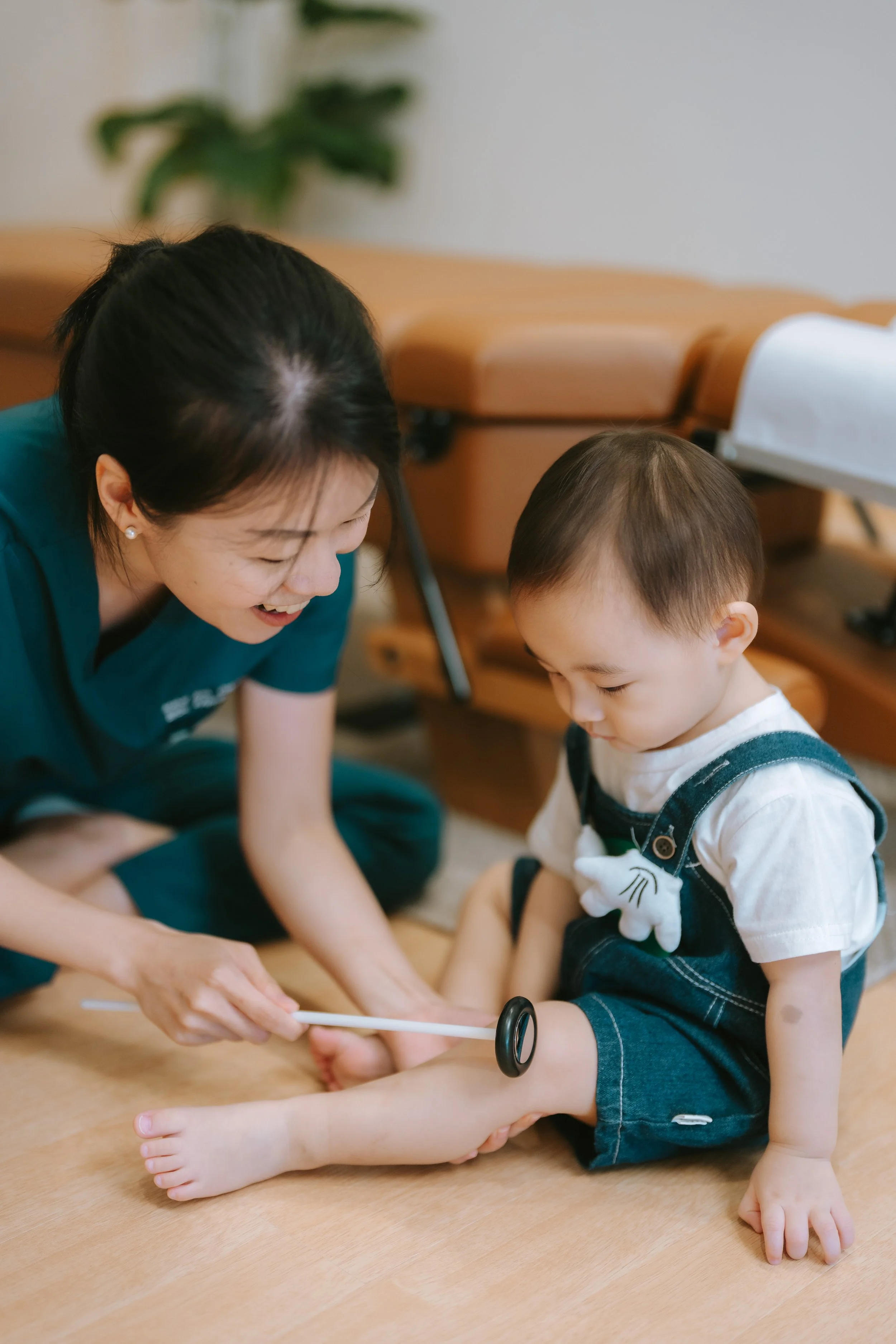
Building healthy foundations for your child
Because your child deserves the best
Common Signs of Imbalance
Your child prefers to turn their head to one side more than the other
Your baby’s body rests in a ‘banana’ shape.
Difficulty latching or feeding
Not meeting developmental milestones
Favouring one arm or leg over the other
Difficulty with tummy time
Uneven head shape
Common Signs of Discomfort
Sleeping issues
Excessive crying, unable to soothe easily
Hates dressing, nappy change, bath, car travel
Dislikes tummy time
Frequent feeding
Conditions We Can Help With
Deformational Plagiocephaly (Flat Head)
Unsettled/ irritable infants
Torticollis
Breastfeeding issues
Reflux
Knock knees, in toeing (pigeon-toed), out toeing, persistent toe-walking after age of 3
Walking or gait concerns
Sleeping difficulty
Developmental Delays
Colic
Expert Chiropractic Care for Babies
You can trust your baby is in good hands at Ease. Our chiropractor has post graduate training in pediatric care, and we take the time to carefully assess each child, understanding their unique needs, and potential causes of discomfort they may be experiencing. The first visit includes
an in-depth conversation to understand your child’s birth history, health history, feeding habits and sleeping patterns.
gentle, comprehensive examination of the spine and nervous system, reflexes, and motor milestones
explanation of findings, care options, and home advice.
We understand you may still have questions, and would like to have a chat with the chiropractor before making a booking, feel free to arrange a short call with us here
Chiropractic For Children
Why?
The birthing process can place significant stress on an infant’s spine and skull. This may affect the infants nervous system function, and their future health potential. This is more so if the birth was invasive, or a C-section delivery.
Nerve system stress, left unaddressed, impairs the child’s ability to function in a state of optimal health and well-being.
Does It Hurt?
We use specific, gentle technqiues tailored to each child’s age, body size, tone, and unique needs. For infants, adjustments are extremely light— sometimes no more than the pressure of a fingertip.
Deformational Plagiocephaly
Deformational plagiocephaly, or commonly known as flat head syndrome is when a child has asymmetrical distortion of the skull. It can present as a flat spot on one side of the head or the entire back of head. In some cases, it resolves 2-3 weeks after delivery. However, in some cases, the head asymmetry persists.
What are some signs to look out for?
Is your baby’s head flatter on one side?
Does one side of your baby’s forehead bulge more than the other?
When looking down at your baby’s head from above, are their ears aligned—or is one ear positioned further forward than the other?
Is there noticeably less hair on one part of their head?
What causes a flat head?
When a baby keeps their head in one position for long periods of time. The skull bones of infants are softer, so they can change shape easily. There are many factors that limit the infant’s ability to reposition their head naturally during the first few months of life, this includes:
In-utero constraint
Position of the baby in the uterus during pregnancy may cause pressure to their head. It can also cause cervical spine joint dysfunction which will predispose the infant to prefer to turn to one side
Birth trauma
The birthing process can be quite stressful for some babies, especially if it involved an emergency C-section, induction and/ or instrument assistance.
Congenital Muscular Torticollis
Different length or tone of the sternocleidomastoid muscle
This can happen as a result of physical trauma to the cervical spine and muscles
Makes it hard for babies to turn their heads, causing them to keep head in same position
Why this needs to be addressed?
There are studies that suggest plagiocephaly is more than a cosmetic issue and was associated with changes in gross and fine motor development, and may be associated with learning difficulties at a later age. Early intervention is key to improve outcomes in head asymmetry and neurodevelopment
Feeding Issues
A long, difficult birth, a very fast birth, an assisted birth with vacuum or forceps, or a cesarean section can lead to tightness or tension in the neck, jaw, or shoulders, which may cause dysfunctional sucking patterns. These issues can make breastfeeding inefficient for the baby and painful for the mother. Chiropractic care can alleviate this tension, improving breastfeeding and reducing discomfort.
6 Factors that may affect infant’s ability to breastfeed
Neck spinal joint dysfunction
Shoulder joint problem
Torticollis
Flat head (Cranial distortions)
Jaw issues - An infant who struggles to open their mouth wide may have difficulty latching properly, which can lead to poor milk transfer. As a result, they may feed in short bursts and frequently come off the breast.
Tongue tie
What We Can Help With
Poor latch and attachment
Fussiness, pulling off and shaking of head
Poor or uncoordinated sucking ability
Choking, gagging, coughing
Less reflux/ projectile vomitting
Frequent feeding (may indicate feeding for comfort or pain relief)
Reflux and/or projectile vomiting
Proper jaw and face development
A more regulated and optimised nervous system
Sleeping Issues
Does your child take more than 30 minutes to fall asleep?
Does your child wake more than once in the night?
Does your child snore?
Is your child very restless at night?
Some studies have shown that by improving a child’s spine and nervous systems that they had a noticeable improvement in sleep duration, reduced night-waking, and a reduced length of time required to fall asleep




